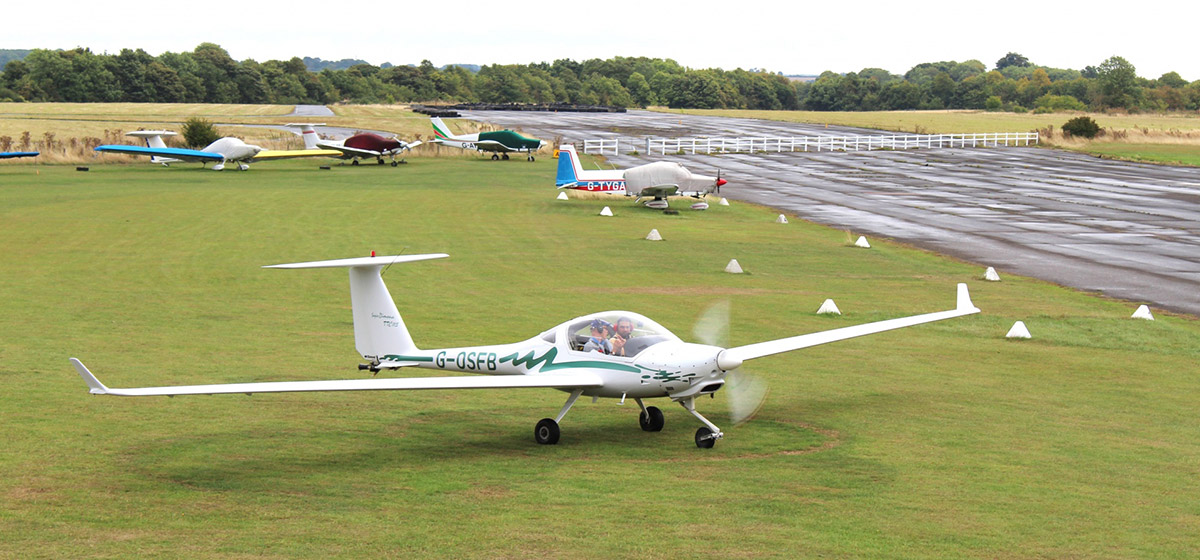PPL(A) SEP/TMG Qualification at Enstone Aerodrome
Whether you’re dreaming of becoming a commercial airline pilot or simply looking to experience the thrill and freedom of flight, the Private Pilot Licence (PPL(A)) is a vital first step.
At Oxfordshire Sportflying, we offer comprehensive training towards your PPL(A), enabling you to act as Pilot in Command (PIC) of single-engine piston (SEP) aircraft and touring motor gliders (TMG) for non-commercial purposes. Our experienced instructors are passionate about aviation and dedicated to helping you build the knowledge, skills, and confidence you need to become a safe, competent, and capable pilot.
Why choose the PPL(A)?
If you’re looking for maximum flexibility and future potential in your flying journey, the Private Pilot Licence is the better choice. While the Light Aircraft Pilot Licence (LAPL) is a great starting point for purely recreational flying within Europe, the PPL(A) gives you more options—whether you’re planning to expand your flying capabilities or eventually move toward a professional aviation career.
Key advantages of the PPL(A):
International Recognition: The PPL(A) is issued under ICAO standards, meaning you can fly in many countries worldwide—not just within the EASA area.
Training Flexibility: Allows you to add additional ratings such as Night Rating, Instrument Rating (IR(R) or full IR), and Multi-Engine Rating.
Career Progression: A required foundation if you plan to continue towards a Commercial Pilot Licence (CPL) or Airline Transport Pilot Licence (ATPL).
Aircraft Variety: Permits flying a broader range of aircraft types, including more complex and higher-performance aircraft (subject to further training).
Greater Flight Privileges: Typically includes fewer restrictions on passengers, airspace, and flying conditions compared to the LAPL.

Your journey to obtaining a PPL(A)
Your journey to becoming a licensed pilot is carefully structured to help you grow your skills step by step—with expert support from day one.
Dual Flight Training – Begin with 25 hours of flying with an instructor, mastering the fundamentals of aircraft handling, navigation, take‑offs, landings, and emergency procedures.
Solo Flight Time – Next, complete at least 10 hours of supervised solo flying, including a minimum of 5 hours cross‑country experience.
Qualifying Cross‑Country Flight – As a milestone, fly a 150 NM (270 km) solo cross‑country, making full‑stop landings at two different aerodromes aside from your departure point – it’s a test of planning, decision‑making, and independence.
Additional Flying – The remaining hours needed to reach the 45‑hour minimum requirement (which may include simulator time, up to 5 hours) can be scheduled flexibly as either dual or solo flights, tailored to your learning pace. Most students finish around 60 hours
Skill Test – Finally, you’ll take a practical Skills Test with a CAA‑approved examiner to demonstrate your ability to safely operate as Pilot in Command.
Class 2 Medical
Radio telephony license
Ground Exam Subjects
Air Law
Navigation
Operational Procedures
Communications
Meteorology
Aircraft General Knowledge
Principles of Flight
Flight Performance & Planning
Human Performance

Medical & Age Requirements
To obtain your PPL(A), you’ll need a UK CAA Class 2 Medical Certificate, issued by an Aeromedical Examiner (AME). This certificate ensures you’re fit to fly and is valid for up to five years if you’re under 40, and two years if you’re 40 or older.
You can begin training at age 14, fly solo from age 16, and apply for your licence when you turn 17. While the medical requirements for the PPL(A) are slightly more stringent than for the LAPL, they’re designed to support your safety and long-term flying ambitions—especially if you plan to pursue advanced ratings or a professional pilot career.
With clear milestones and support along the way, we’ll help ensure your route to the cockpit is smooth and achievable.
Your Aircraft
For PPL(A) students training on Single Engine Piston (SEP) aircraft, we use the Piper Cherokee Warrior II—a reliable, proven four-seat trainer renowned for its stable handling, roomy cockpit, and robust performance. Its forgiving flight characteristics and responsive controls make it an excellent platform for building core piloting skills and gaining confidence as Pilot in Command.
For PPL(A) students training on Touring Motor Gliders (TMG), we offer a choice between the Diamond Super Dimona and the Slingsby Venture. The Super Dimona features a modern cockpit and offers a smooth, efficient, and technically enriching flight experience. The Slingsby Venture, by contrast, is a timeless, tandem-seat trainer known for its benign handling and outstanding visibility—perfect for hands-on flying and enjoying the fundamentals.
Why Choose Us?
We’re passionate about sharing the joy of flight. With hundreds of hobby-pilots trained, our friendly instructors tailor each lesson to your pace and goals. We offer transparent, flexible pricing packages to suit any budget, and provide all the maps, flight computers, rulers and textbooks you need so you can focus on flying. At Enstone, you’re not just another student—you’re part of our flying family.
Ready to take off?
Call us on 01608 677208 or send us a message online to book your first lesson. We can’t wait to welcome you to the cockpit!